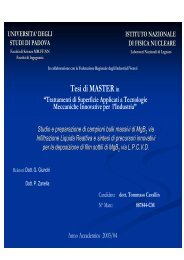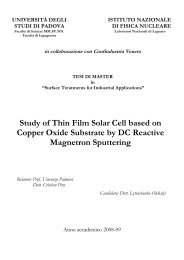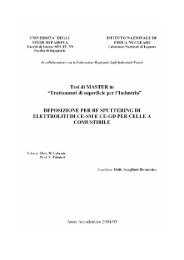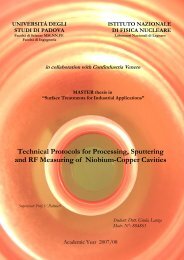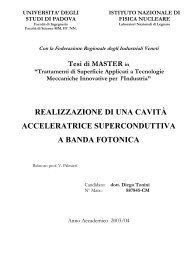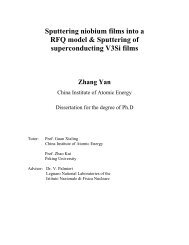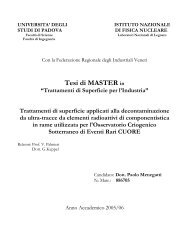Magnetron sputtering of Superconducting Multilayer Nb3Sn Thin Film
Magnetron sputtering of Superconducting Multilayer Nb3Sn Thin Film
Magnetron sputtering of Superconducting Multilayer Nb3Sn Thin Film
You also want an ePaper? Increase the reach of your titles
YUMPU automatically turns print PDFs into web optimized ePapers that Google loves.
superconducting magnet construction, and then it has been generally neglected inA15 treatises.V 3 SiThis material is one <strong>of</strong> the few examples <strong>of</strong> an A15 compound that formcongruently from the melt. The A15 phase in the Vanadium-Silicon system isstable between 19 and 25 at. % Silicon. Large single crystals can be grown in thewhole range either by zone melting or by recrystallization at 1870°C. There is alinear increase in T C from 19 at. % to 25 at. % silicon, where a maximum T C <strong>of</strong>17.1K is achieved. For this compound, the RRR value <strong>of</strong> 80 can be obtained.One problem must be solved before to apply this material to cavities: aproper substrate should be chosen. Niobium is not the right choice, because <strong>of</strong> thelarge diffusion coefficient <strong>of</strong> Vanadium into Niobium at high temperatures. Thechoice <strong>of</strong> Vanadium itself, as a substrate, should be more deeply considered, dueto the drawback <strong>of</strong> lower thermal conductivity than Niobium, and this is aproblem for the achievement <strong>of</strong> high gradients.Fig.1.6 A15 phase fields and superconductivity in a) Nb-Ga, b) Nb-Ge, and c) Nb-Al SystemsNb 3 AlThis compound is formed by a peritectoid reaction from the bcc solidsolution and sigma (Nb 2 Al) phase at 1730°C, and contains 26 at. % Al. The13



